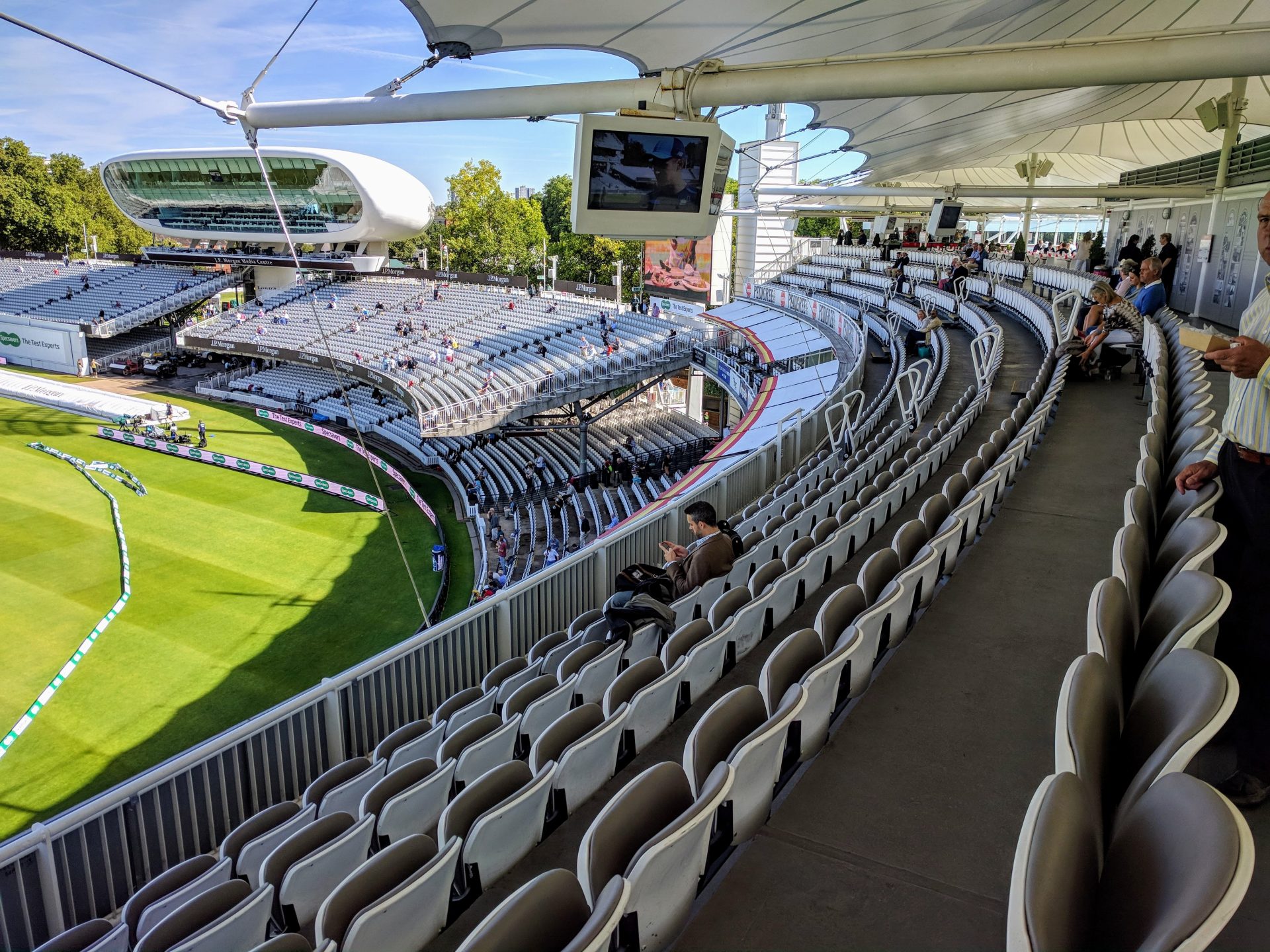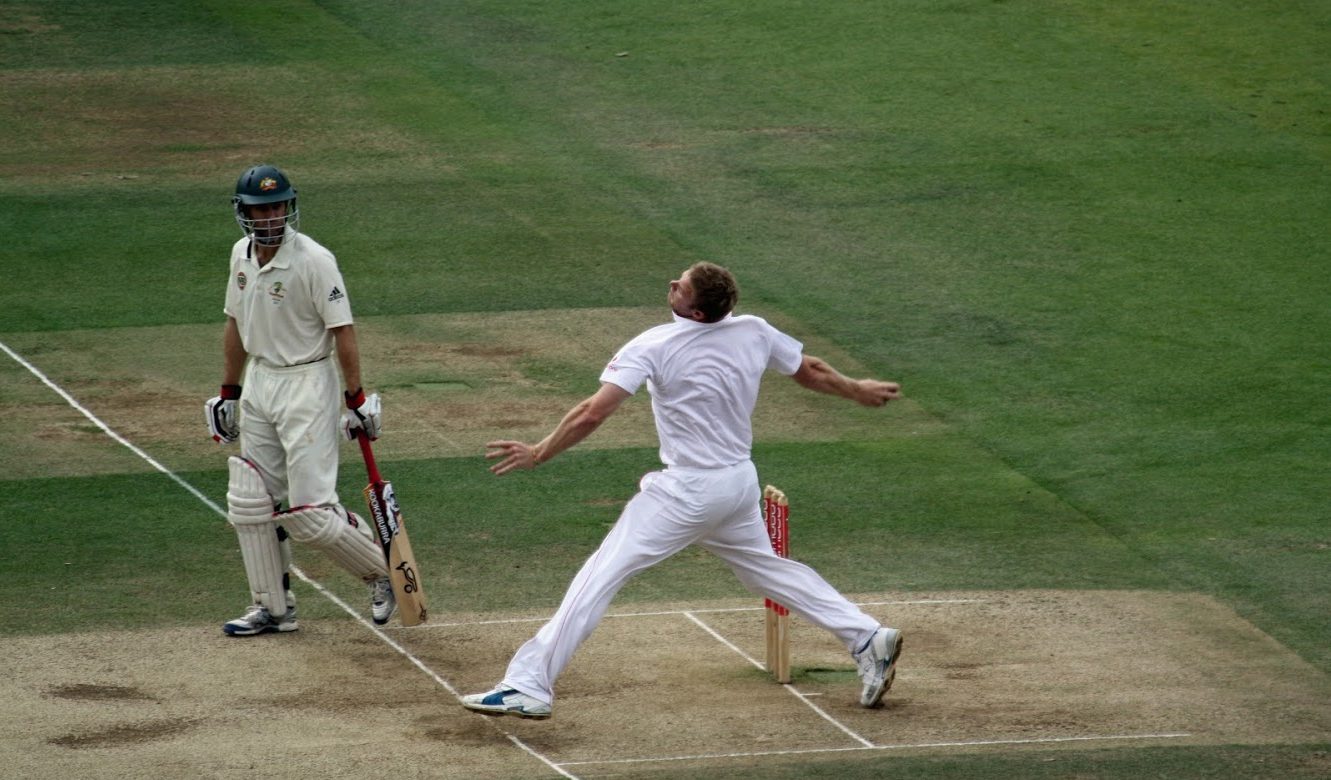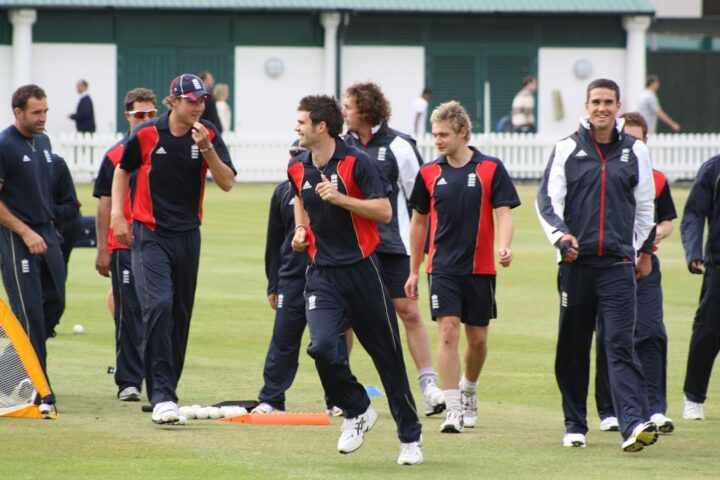Wicket keeper is the most peculiar of field positions with the incumbent trapped in gloves and pads for the duration of a match. A functionary with a multiple brief who often has to stop things from happening. They gather the best and worst deliveries unleashed by bowlers; prevent leg byes, overthrows and any other brain fade that might result in additional runs being conceded. A good wicket keeper could easily save his team 30 runs an innings, but it’s far from being the only string on his bow. He must study the flight of each ball and watch for the play and miss. The slightest edge might lead to a catch or stumping of a batsman who strays from the crease. It will sometimes attract the eccentric; mavericks who take the gloves because nobody else fancies the job. The best wicket keepers are the ones you don’t notice but remain a key element of the team’s field plan.
Whilst Yorkshire has provided more wicket keepers to the test side, it’s Kent that arguably claim the most skilled practitioners of the art. Edward Tylecote was the first Kent player to keep wicket for England in 1882. He was technically a member of the first test side to win the Ashes. That summer England had lost at home to Australia for the first time. The event sparked a famous mock obituary in the Sporting Times. It proclaimed that English cricket had died and the ashes sent to Australia. England captain Ivo Bligh was charged with recovery of the Ashes on the winter tour Down Under. Tylecote played all three matches in a 2-1 series victory, and became the first wicket keeper in test history to score a half century. Captain Bligh was presented an urn that bore a poem; ‘When Ivo goes back with the urn, the urn; Studds, Steel, Read and Tylecote return, return’. Not exactly Wordsworth but a cool way of finding your place in cricket history.
Tylecote was followed by a wonderful ragbag of characters who stare from the history books with finely manicured moustaches. For example, Mordecai Sherwin played in goal for Notts County and kept wicket for Nottinghamshire. At 5ft 9in and 17 stone it is difficult to imagine any delivery getting past him. He won three test caps in the late 1880s and would surely have faced W.G. Grace at county level. It must have been a curious sight for the bowler; the well upholstered WG at the crease with Sherwin keeping wicket behind him.
Henry Wood began his career with Kent but was capped for England whilst playing for Surrey. He became the first wicket keeper to score a test century; an excellent 134 not out against South Africa in 1892. Gregor MacGregor (so good they named him twice) naturally played rugby union for Scotland; and kept wicket for England in 7 test matches. But Dick Lilley was the first superstar keeper who played in 35 test matches and took 92 dismissals, a record that stood for nearly 30 years.
The next Kent keeper to take the gloves for England was Oxbridge Blue George Wood who also secured colours in rugby and hockey. He played three test matches against the touring South African side in 1924 and enjoyed a long association with the MCC. Three years later Wood stepped down at Kent and was succeeded by grammar schooled Les Ames. Born in the picturesque Elham Valley, he became one of England’s greatest cricketers of the pre-war era. Ames gathered a host of records in a first class career that lasted for 25 years. Among the most notable was a hattrick of 100 dismissals and 1000 runs in a single season (1928-1932); and the only wicket keeper to score 100 centuries. In a 47 test career he played in the infamous Bodyline tour of 1932-33 and eventually broke Dick Lilley’s dismissal record.
While Kent nurtured a true legend they had an embarrassment of riches in the wicket keeping department. William Howard Vincent Levett served as Ames’ deputy for 17 years. A strict amateur Levitt was primarily a hop farmer. He soon acquired the sobriquet ‘Hopper’ and played in 175 first class matches taking 478 dismissals. Hopper mainly played when Ames was injured or on test duty but was a highly capable understudy. His only test cap was awarded during the tour of India in 1933-34 when Douglas Jardine gave leg theory its final outing. The Ames Levett Sports Centre at Canterbury now acts as a winter training base for players, and fulfils a key requirement for any bone fide legend.
The conveyor belt duly delivered after the war when Godfrey Evans made his test debut in 1946 against India. With Ames and Levett still playing intermittently Kent had three England wicket keepers on their books. Evans was a colossus behind the wicket and smashed Les Ames dismissals record with 173 catches and 46 stumpings. He was a member of three Ashes winning sides and played first class cricket until he was 47. Evans played his final test match in 1959 and was initially replaced by Roy Swetman of Gloucestershire. Kent had supplied England’s regular wicket keeper for almost 30 years, with the aforementioned trio playing a total of 139 tests. For the time being Jim Parks of Sussex was the favoured choice. But the Garden of England would not let the test side down.

Alan Knott was a slightly built, wiry athlete who stood just 5ft 7inches tall; but became England’s greatest ever wicket keeper. Flea as he was inevitably dubbed made his debut for Kent in 1964. His maiden test came against Pakistan in 1967 although took some time to dislodge Jim Parks. However, by the end of the West Indian tour of 1967-68 Knott had firmly established himself as England’s number one wicket keeper. His foibles and habits quickly became a trademark. With shirt collar always turned up he performed a series of stretching exercises with manic precision. Constantly extending his limbs and rotating his hips made Knott instantly recognisable on the field. He was a superlative wicket keeper who proved equally adept with the bat, compiling a test average of 32 and top score of 135.
However, in 1977 the Kerry Packer World Series came calling. Knott’s involvement resulted in a three year test ban and opened the door for an unsung hero. Bob Taylor of Derbyshire had one test cap gained during the tour of New Zealand in 1971. One man’s loss was another man’s gain as Taylor slipped into the gloves of an illustrious predecessor. Whilst he lacked Knott’s prowess with the bat he was arguably equal as wicket keeper. In 57 tests Taylor took a highly credible 174 dismissals even though omitted when Knott briefly returned after his ban ended. Alan Knott was later banned for his part in the first rebel tour of South Africa. His achievements remain undimmed and occupies a significant spot in the record books. Knott’s record of 269 dismissals is still the highest total for England and 8th highest in test history.
Paul Downton began his career with Kent but opportunities were limited as Alan Knott’s deputy. It was after his move to Middlesex that he broke into the test side. But there was stiff competition from Bob Taylor, David Bairstow and Bruce French. He nevertheless managed 30 test appearances and 75 dismissals. An abiding memory was Downton’s habit of celebrating catches before they were properly taken. In all fairness not the only wicket keeper to suffer the tendency, but seems to stand out more than most.
Geraint Jones took a circuitous route into the England test side. Born in Papua New Guinea and raised in Australia to Welsh parents, he made his debut for Kent in 2001. Jones enjoyed a 12 year career as Kent’s first choice wicket keeper, taking 635 dismissals and scoring over 9,000 runs. The highlight of a 34 test career was his role in England’s 2005 Ashes victory.
In recent years, wicket keeper has become less of a specialist role with better keepers often sacrificed for an extra batsman. The role will frequently be passed to a less capable player, but the value of a high quality keeper can never be underestimated. It’s perhaps surprising that Alan Knott’s dismissal record has stood for this long. Matt Prior (256) and Alec Stewart (241) have got agonisingly close; the only current England player who might threaten the record is Jonny Bairstow (191) if he can permanently wrestle the gloves from Jos Buttler.
Knott’s position in the top 10 test keepers is looking increasingly precarious; Bradley-John Watling of New Zealand (265) and Quinton de Kock (225) are rapidly closing in on the record. There are four Australians in the top 10 including Adam Gilchrist with a mighty 416 dismissals. But none have threatened the peerless Mark Boucher of South Africa with a monstrous 555 dismissals. So we pay tribute to the eccentrics that suffer bruised fingers and friction burns on hands that rarely see the light of day.
Brian Penn









Fascinating article, Brian. I would certainly rate Knott and Bob Taylor as the best keepers I’ve seen. Incidentally, in relation to your opening sentence I did see Bob Taylor bowl for England, when Gooch took the.gloves for the meaningless final session of a, by then, drawn Test in India !
Watling has already retired so I am not sure how he is expected to add to his tally.
Nice to read as someone from the county! As a small boy I watched a lot of Kent cricket when Evans was the main man but occasionally saw both Hopper and Ames around the ground conversing with him. I have seen every Kent keeper since and I would rate Knott as the best of them although Evans was pretty good.
I was lucky enough to be living in Canterbury during Knotty’s final season. His batting had tailed off but his keeping was as sharp as ever.
He was an integral part of the 1977 Ashes’ winning team, probably the best England fielding unit I’ve seen. Next to Knott in the slips stood Brearley, Greig, Hendrick and Roope – all top class slippers. Bob Woolmer was an excellent specialist short-leg and Randall (and briefly Barlow) patrolled the covers. My favourite catch of Knott’s in that series was when he caught McCosker off Greig, diving across when the ball wasn’t going to carry to slip. My all-time favourite Knott catch was one I didn’t see live – he caught Sardesai of Underwood in 1971 with ridiculous ease when you see how wide the knick was.
The decline of specialist keepers has been sad. I suspect it has something to do with the game’s lack of a metric for how many runs keeper errors cost a team. If a converted batsman/keeper allows a team to play five bowlers it’s just about defensible (a la Duncan Fletcher era England) but when it’s part of stacking a side with batting in the (usually vain) hope of avoiding defeat I hate it.
Always amazed me watching Knott constantly fidgeting about behind the stumps and at the wicket with that handkerchief dangling out if his pocket, that he managed to stay so still when it mattered. My most memorable Knott moment was when he was keeping in a test against the Windies and was so confident of pouching a regulation catch that he went to throw the ball up before it had settled in his gloves and it dropped through them onto the floor. I guess this means this single error was so rare that it became so memorable. His keeping to the almost medium pace Underwood was amazing, though he did get a lot of practice on the county circuit. He was also one of the pioneers of the cut over slips, which Many still use today. His face saving partnerships with Grieg when we were 5 down for not exactly plenty became as familiar a feature of the England batting as the early collapses, when we seemed to be constantly 23-3 with David Steele coming to the wicket, especially against the Windies.
I think you will find that Roy Swetman was at Surrey when he kept wicket for England.
Excellent overall but:
1) Dick Lilley played for Warwickshire, a point not mentioned in your post in spite of the prominence you gave him (he was succeeded as that county’s keeper by EJ ‘Tiger’ Smith).
2) You have completely overlooked one of Kent’s greatest keepers, Fred Huish who accomplished over 1,000 dismissals in FC cricket.